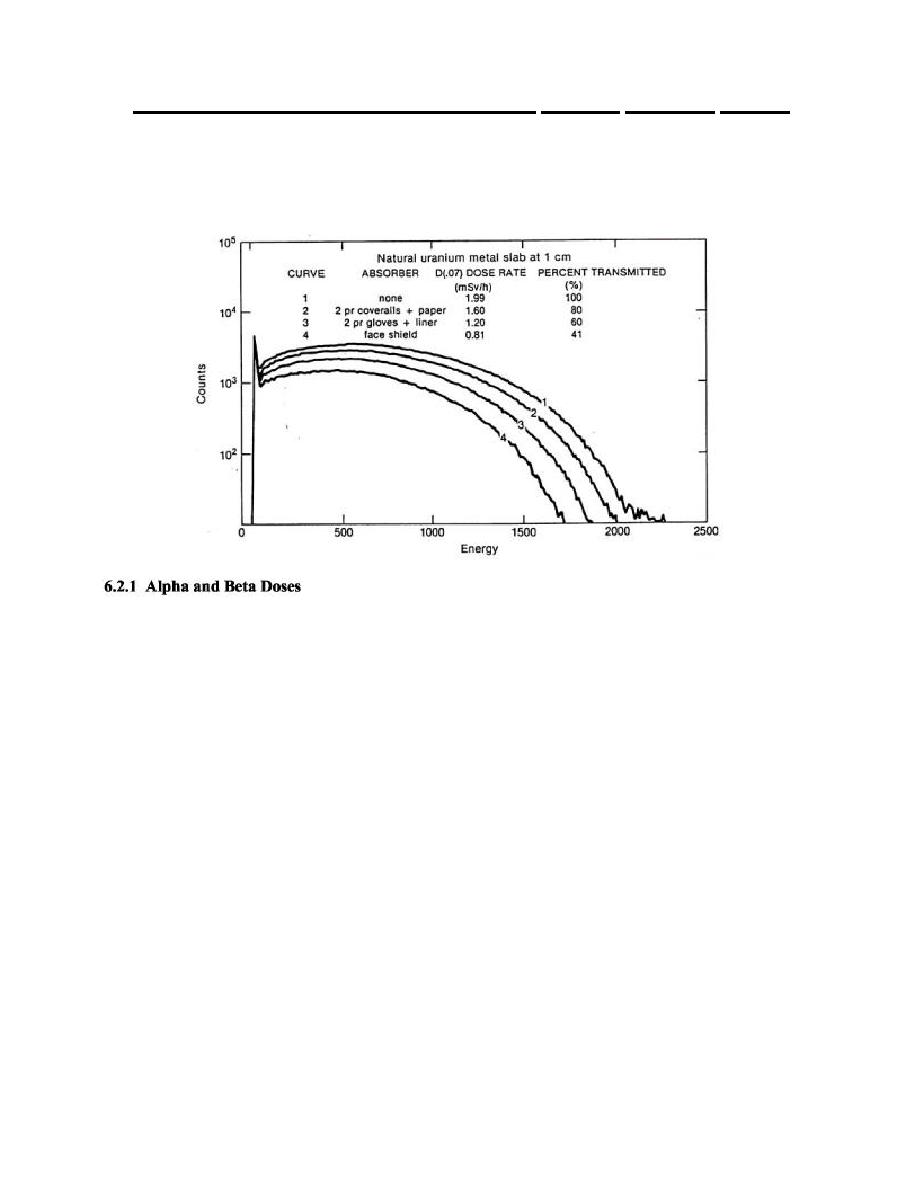 |
|||
|
|
|||
|
|
|||
| ||||||||||
|
|  DOE-STD-1136-2004
Guide of Good Practices for Occupatio nal Radiation Protection in Uranium Facilities
Figure 6-3.
Changes in Beta Energy Spectra and Shallow Dose Rate From a Natural Uranium Metal
Slab Source Caused by Protective Apparel (Note the bremsstrahlung peak in the low-
energy ranges.)
Uranium is an alpha-emitter and is of concern if inhaled or ingested into the body. However, the
skin is an effective barrier to alpha particles, and alpha radiation emitted from external contamination is only
a problem if there is a wound or break in the skin.
Beta radiation fields are usually the dominant external radiation hazard in facilities requiring
contact work with unshielded forms of uranium. Figure 6-1 gives the estimated beta dose rates from a
semi -infinite slab of uranium metal of various enrichments. For uranium enrichments up to 30%, the beta
enrichments, one is dealing essentially with 2.29-MeV (Emax) beta particles from 234mPa, the most energetic
contributor to the beta exposure.
Beta doses to the skin, extremities, and (sometimes) the lens of the eye can be limiting in facilities
that process unshielded depleted, natural, or low-enrichment uranium. Absorbed dose rates as a function of
depth were measured by P. Plato (Plato 1979) with an extrapolation chamber in a tissue equivalent medium
(Mylar) (See Figure 6-2). Skin doses at less than 4 mg/cm2 resulting from alpha particles are of no concern
from an external radiation exposure standpoint. Potentially significant skin exposure from uranium occurs
primarily from the 234mPa betas at tissue depths of 4 mg/cm2 and greater.
Processes that separate and sometimes concentrate beta -emitting uranium daughters are not
uncommon in DOE uranium facilities. Surface beta dose rates on the order of 1 to 20 rad per hour have
been observed in such circumstances. Exposure control is complicated by the fact that considerable
contact work takes place in facilities that process uranium metal. Beta particles are shielded by rubber
gloves or other protective devices or are usually absorbed within the dead layer of skin. The actual beta
dose to live tissue would depend on the energy of the beta particles and the thickness and types of
intervening shielding.
6-7
|
|
Privacy Statement - Press Release - Copyright Information. - Contact Us |